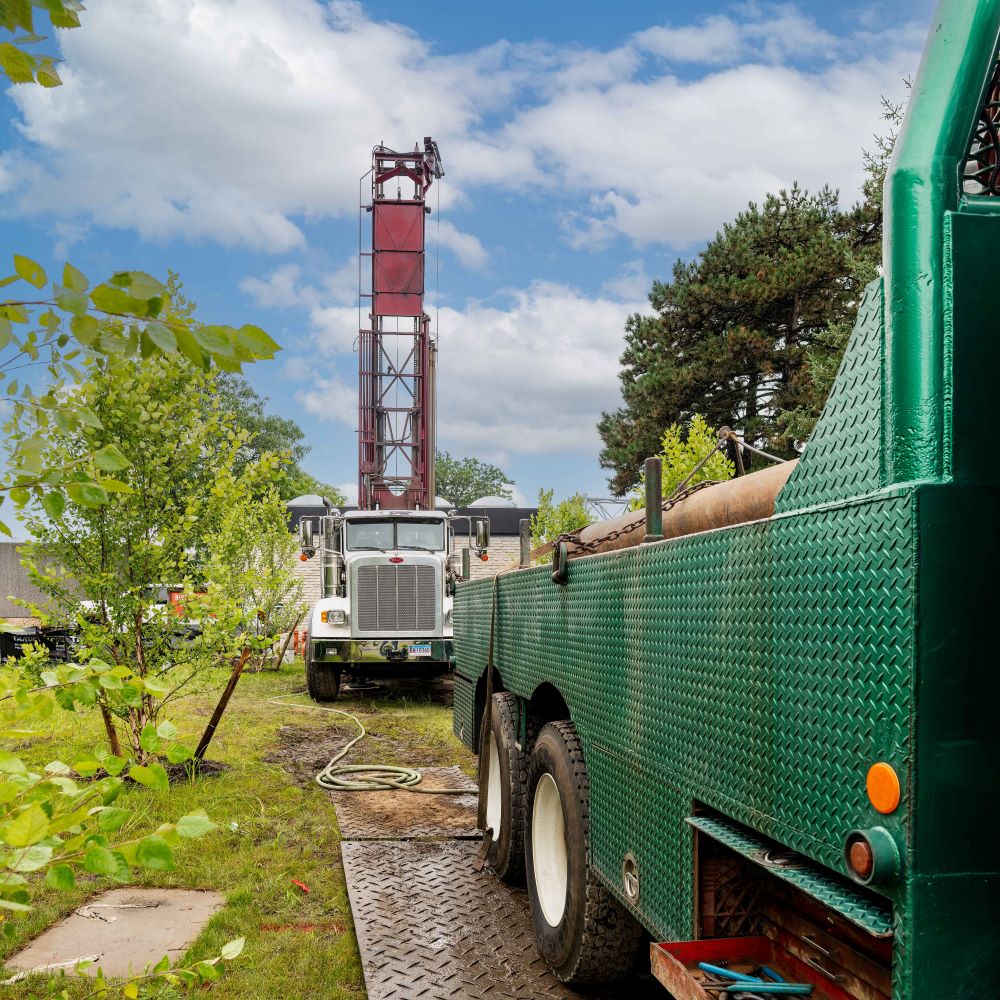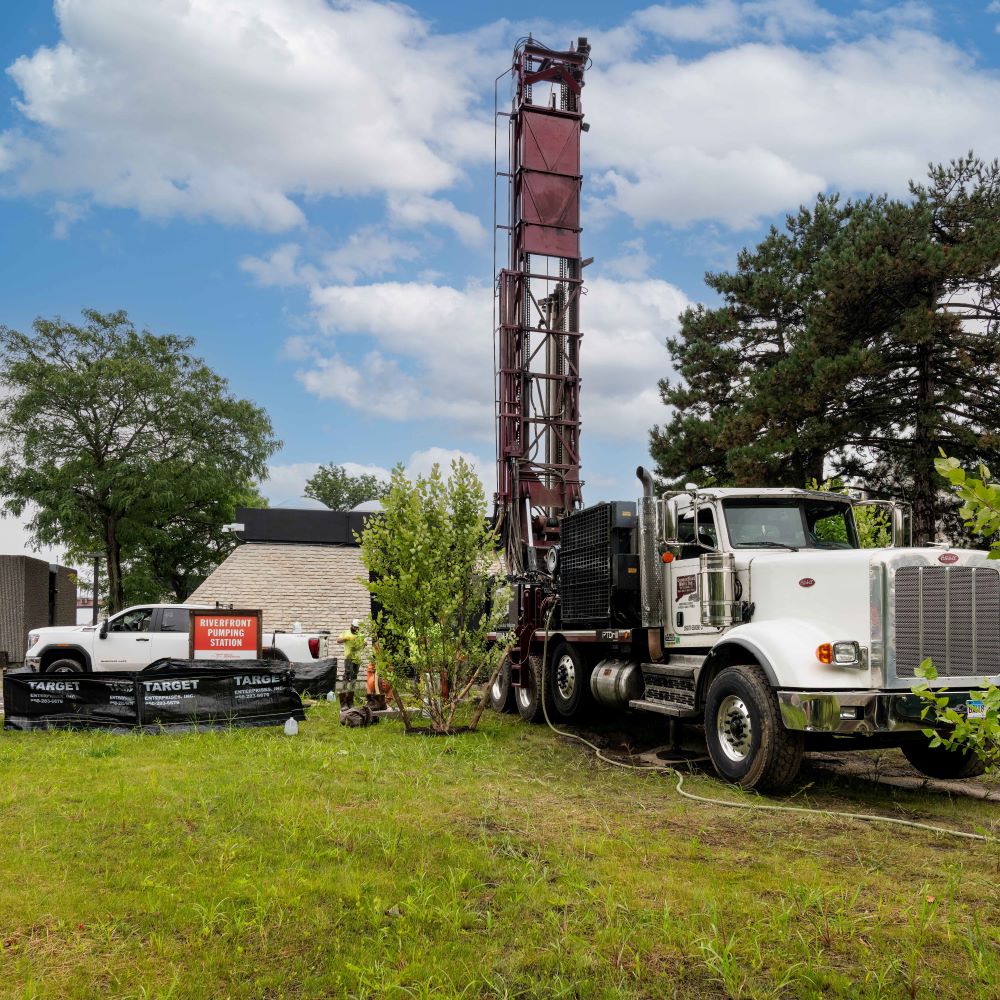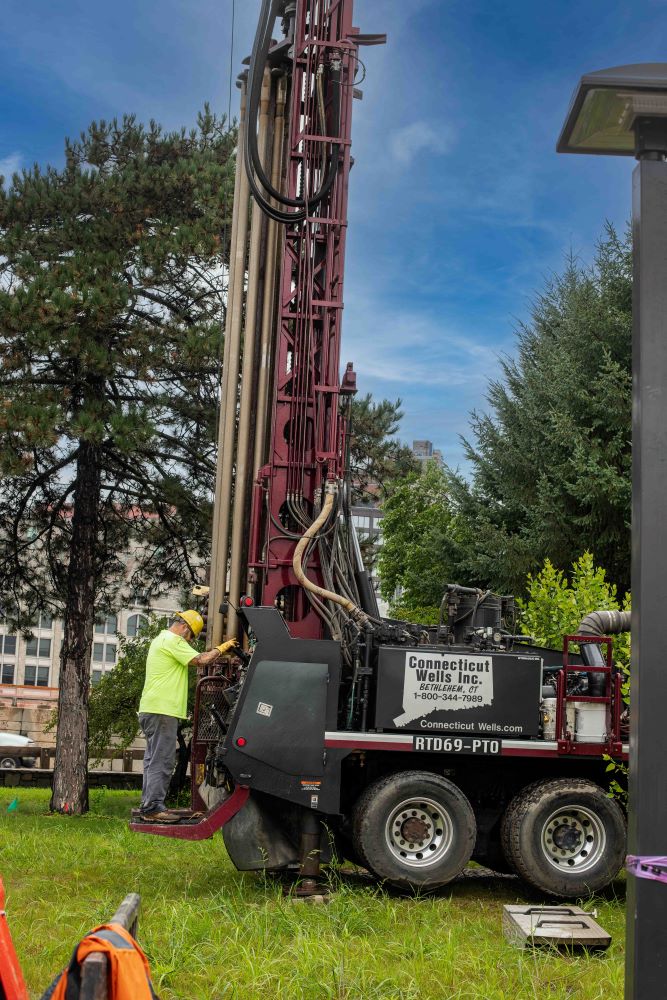Our team took on an important project this summer – testing a 500-foot well for the Empire State Plaza in Albany, NY. Performed as part of our standard procedure, these tests help gauge the potential of geothermal energy for our clients. With an increasing interest in green energy across cities and towns, it’s crucial we offer expert analysis through our well test procedure to determine the suitability of specific sites.
What is Geothermal Conductivity Testing?
While geothermal conductivity testing might initially seem to be a complex term, the concept is rather straightforward. This method involves the examination of how effectively the earth can transfer, or conduct, heat. Much like the immense thermal power of a volcano, there are vast reserves of heat energy beneath the surface of the earth, often referred to as geothermal energy.
Our geothermal conductivity testing enables us to precisely locate the optimal points for harnessing this naturally occurring energy. By offering critical insights into the earth’s thermal properties, this testing informs us of the precise location and depth at which to initiate our excavation. The overall goal is to maximize the yield of the energy extraction, which is all made possible through this fundamental process.
How do you Test a Geothermal Well?
The testing of a geothermal well involves multiple stages to ensure accurate results.
- Preparation: Prior to the testing phase, the well must be prepared. This involves correctly positioning necessary equipment and ensuring the well is free from any form of obstruction.
- Installation of Temperature Sensors: The next step is the accurate installation of temperature sensors inside the well. These sensors grant key insights into the thermal properties of the well.
- Introduction of Heat Tracers: After the sensors have been installed, heat tracers are then introduced into the well, causing a specific, measured amount of temperature change which the sensors can detect.
- Data Collection and Analysis: Over a specific duration, the data captured by the sensors is collected. Then, it is thoroughly analyzed to assess the well’s geothermal properties and its potential for energy production.
Our recent work in Albany, NY is a great showcase of our expertise in generating green energy. Each project is a learning experience and helps us refine our testing procedures. After all, the success of geothermal energy projects boils down to effective testing and analysis, something we’re proud to be experts in!







